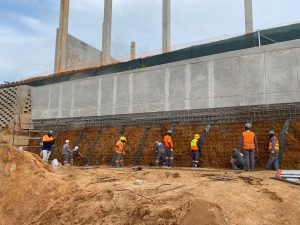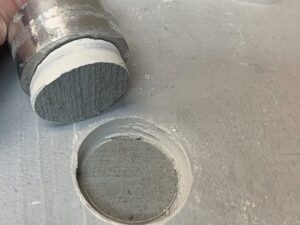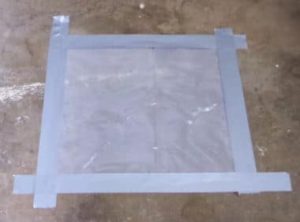By Sheldon White
Colloidal silica reduces water-vapour transmission in concrete by between 70% and 80%. This is according to independent laboratory tests that were undertaken to ASTM standards. Formerly known as the American Society for Testing and Materials, ASTM International is a global standards organisation. It develops and publishes voluntary consensus technical standards for a wide range of materials, products, systems and services.
Colloidal silica and ASTM E96
Colloidal silica post-placement pozzolan technology was tested to ASTM E96-10 “Standard Test Methods for Water Vapor Transmission of Materials”. This standard permits the user to select the most appropriate method to test their materials for water-vapour transmission. It allows multiple products to be covered by a single standard. The standard is suited to materials of up to 32mm in thickness. This limit was established mainly because of the length of time that it would take to test thicker materials using this standard. Bear in mind that the time to reach equilibrium of water permeance increases as a square of the thickness of the material. We also selected conditions that closely replicated the environments in which our colloidal silica post-placement pozzolan technology would be used. This is as outlined in section 5 of the standard, namely “Significance and Use”.
Efficacy of colloidal silica
The second primary ASTM E96 method was used to test the efficacy of colloidal silica post-placement pozzolan technology in reducing water-vapour transmission in concrete.
A dish that contained distilled water was affixed to the concrete specimen that was treated with colloidal silica post-placement pozzolan technology. We then measured the movement of water through the specimen in vapour form in a controlled manner. This enabled us to determine the approximate real environment in which water movement from the bottom to the top of the slab was most critical for flooring manufacturers and installers.
Concrete treated with colloidal silica
We tested colloidal-silica post-placement pozzolan technology-treated concrete slabs of about 15mm in thickness. The trial was undertaken within the conventional timeframe of the testing regime. Slabs treated with colloidal silica post-placement pozzolan technology of a greater thickness could also be tested. However, this would have increased the testing time considerably.
The specified relative humidity in the test chamber was 50 +/- 2% and the stated temperature 38 +/- 1° C. An air velocity of between 0.02 and 0.30 m/s was specified inside the test chamber. If desired, ASTM E96 allows for extreme humidity and temperatures between 23° C and 26.7° C. Specified rather than alternate test values for temperature and humidity were used for testing purposes.
The test results presented for water vapour transmission values were compared to a control specimen. It was tested using a similar procedure and at the same time as the experimental samples. Comparable calculations were also used to determine water vapour transmission. They are detailed in section 13 of the standard.
Colloidal silica post-placement pozzolan
Our colloidal silica post-placement pozzolan technology was applied at time of concrete initial set. We also applied colloidal silica post-placement pozzolan technology after concrete was aged in the laboratory for seven days. Average water-vapour transmission was obtained from direct measurements. Water-vapour transmission was used to calculate permeance. This is in addition to the projected values for vapour pressure for the measured relative humidity and temperature of the test chamber.
A high permeability concrete mix in the untreated state was used. This was to better demonstrate the ability of colloidal silica post-placement pozzolan technology to reduce water-vapour transmission.
Permeance values
| Test group | Average water-vapour transmission/kg/92m2/24hr | Calculated Average Permeance |
| Control | 22.80 | 0.280 |
| SCP 327 (Applied at Time of Placement) |
4.56 | 0.056 |
| SCP 578 (Applied at 7 days of age) |
5.54 | 0.068 |






